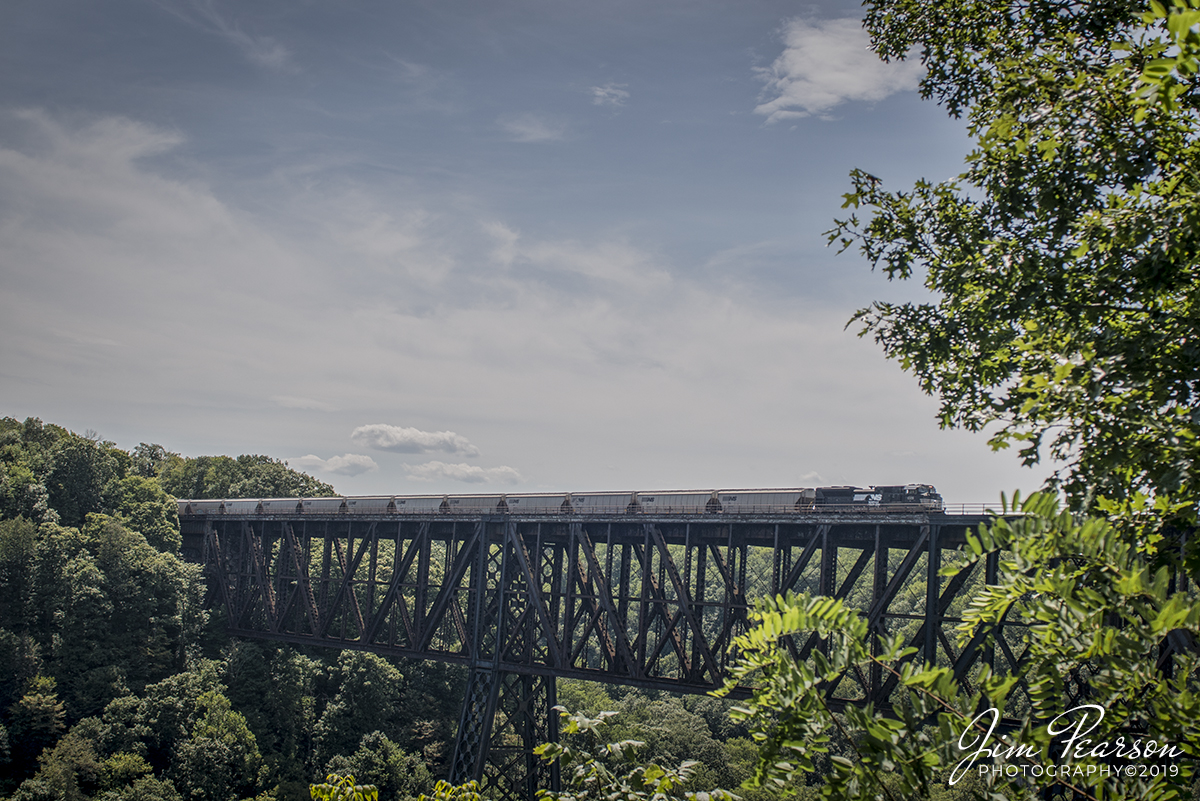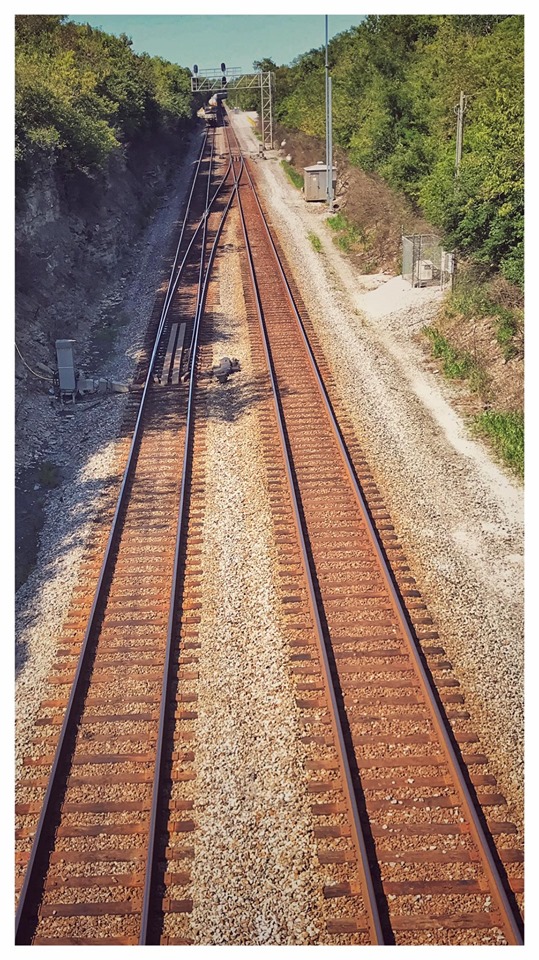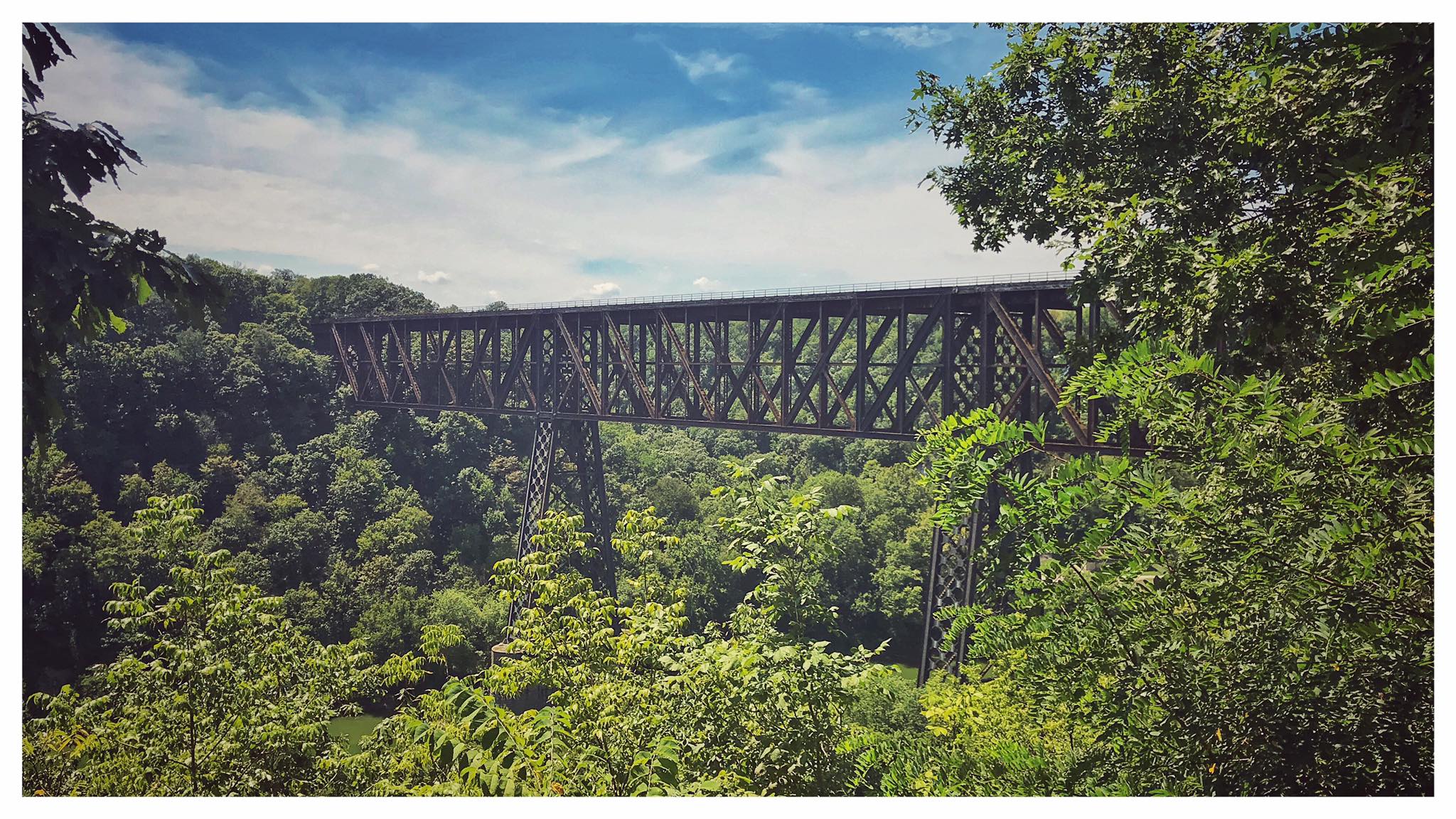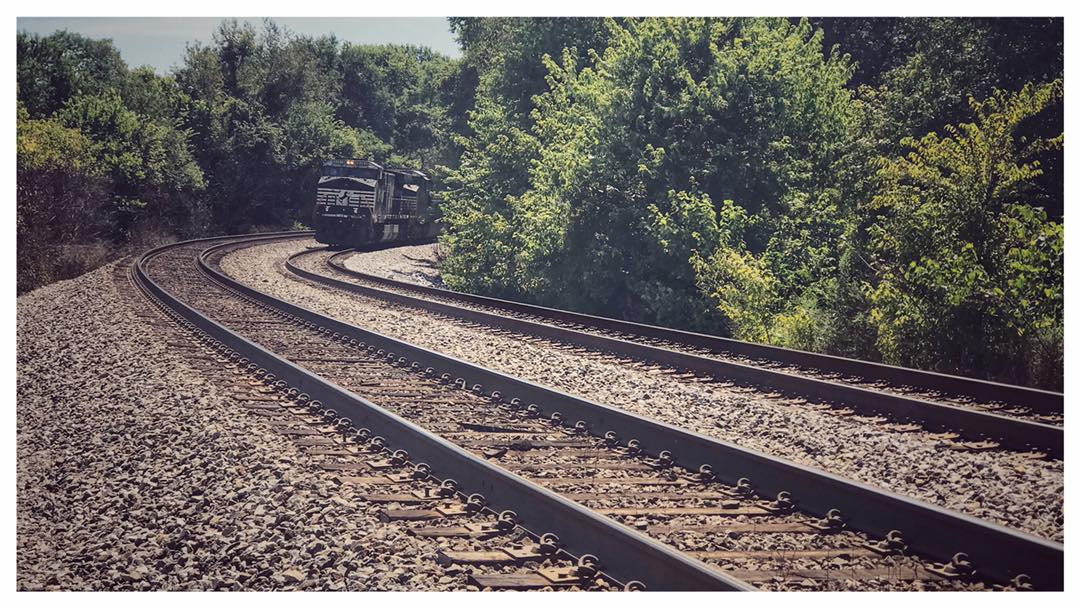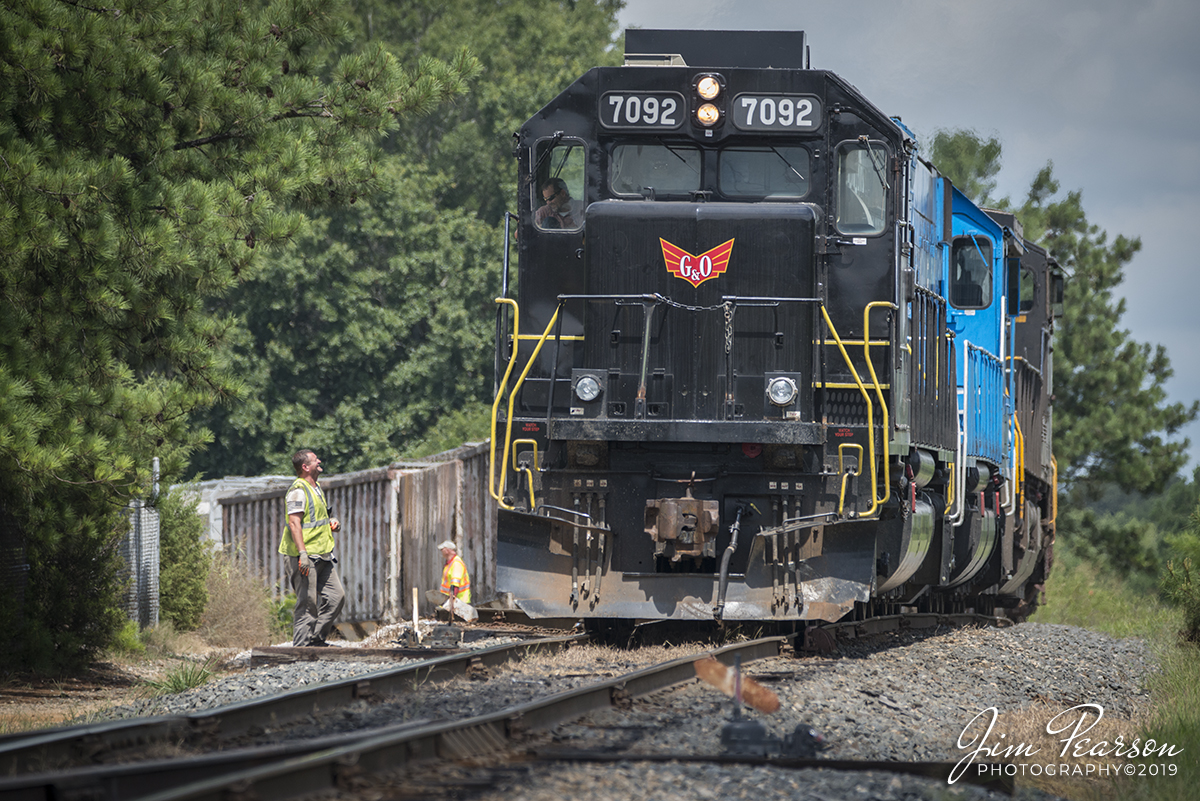August 10, 2019 – Norfolk Southern engine 1029 leads a grain train north across the NS cantilever bridge over the Kentucky River at High Bridge, Kentucky from the CNO&TP First District.
According to Wikipedia: High Bridge is a railroad bridge crossing the Kentucky River Palisades, that rises approximately 275 feet from the river below and connects Jessamine and Mercer counties in Kentucky. Formally dedicated in 1879, it is the first cantilever bridge constructed in the United States. It has a three-span continuous under-deck truss used by Norfolk Southern Railway to carry trains between Lexington and Danville. It has been designated as a National Civil Engineering Landmark.
In 1851, the Lexington & Danville Railroad, with Julius Adams as Chief Engineer, retained John A. Roebling to build a railroad suspension bridge across the Kentucky River for a line connecting Lexington and Danville, Kentucky west of the intersection of the Dix and Kentucky Rivers. In 1855, the company ran out of money and the project was resumed by Cincinnati Southern Railroad in 1873 following a proposal by C. Shaler Smith for a cantilever design using stone towers designed by John A. Roebling (who designed the Brooklyn Bridge).
The bridge was erected using the cantilever design with a three-span continuous under-deck truss and opened in 1877 on the Cincinnati Southern Railway. It was 275 feet (84 m) tall and 1,125 feet (343 m) long: the tallest bridge above a navigable waterway in North America and the tallest railroad bridge in the world until the early 20th century. Construction was completed using 3,654,280 pounds of iron at a total cost of $404,373.31. In 1879 President Rutherford B. Hayes and Gen. William Tecumseh Sherman attended the dedication.
After years of heavy railroad use, the bridge was rebuilt by Gustav Lindenthal in 1911. Lindenthal reinforced the foundations and rebuilt the bridge around the original structure. To keep railroad traffic flowing, the track deck was raised by 30 feet during construction and a temporary trestle was constructed. In 1929, an additional set of tracks was built to accommodate increased railroad traffic and the original limestone towers were removed.
The bridge is still accessible by Kentucky State Route 29. In 2005 the state and county jointly reopened a park near the bridge (which had been closed since the mid 1960s) at the top of the palisades above the river. It included a restored open air dance pavilion, first used in the 19th century; as well as a new playground, picnic area, and viewing platform that overlooks the bridge and river’s edge from the top of the palisades.

